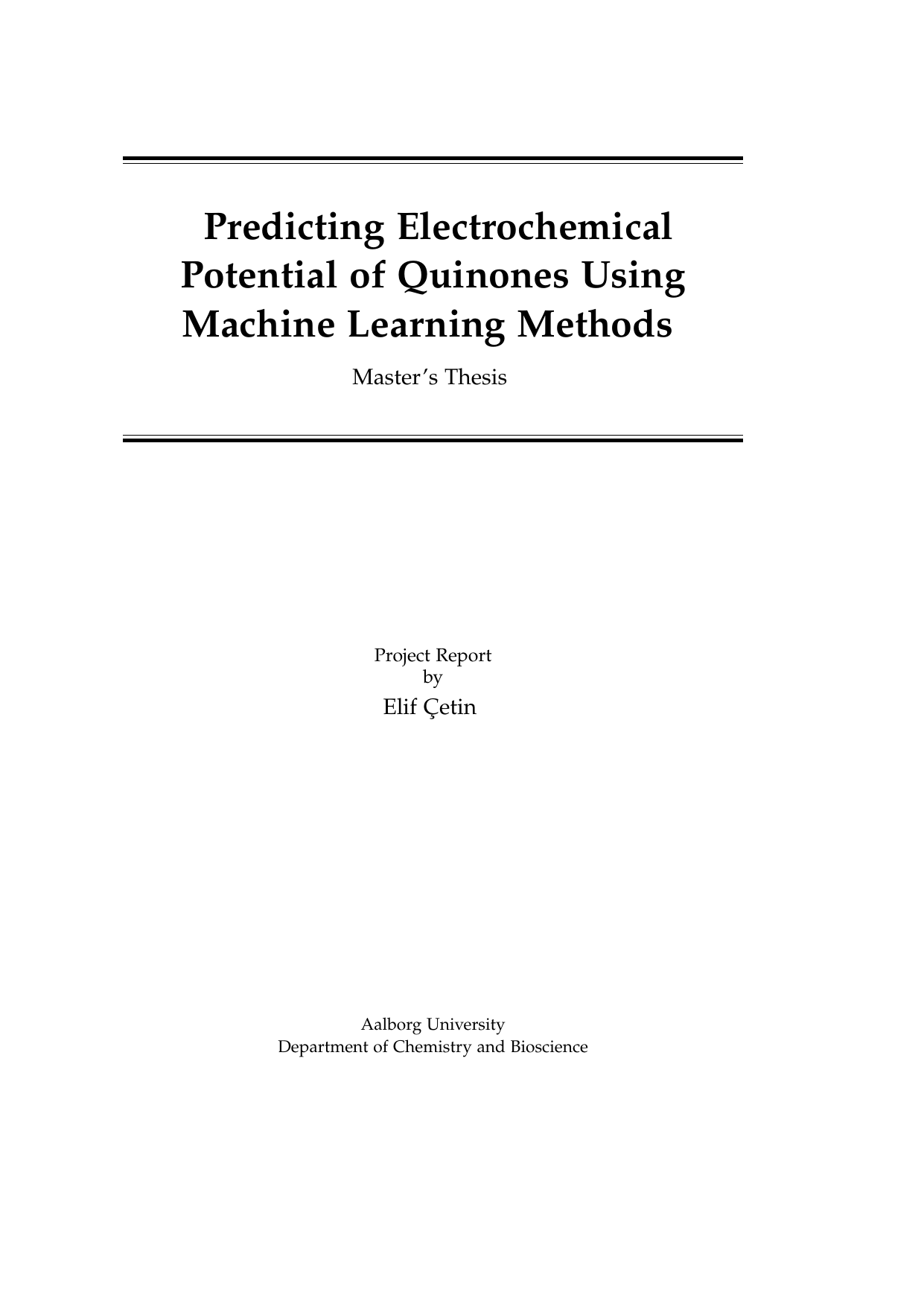
Predicting Electrochemical Potential of Quinones Using Machine Learning Methods
Author
Term
4. term
Education
Publication year
2025
Submitted on
2025-06-01
Pages
73
Abstract
With growing energy demands and the transition to renewable sources, the need for grid-scale energy storage systems is increasing. Quinones, a group of redox-active organic compounds that can be derived from fungi and bacteria, are promising biomolecules for use in redox flow batteries due to their tunability. This study investigates the prediction of quinone standard reduction potentials using machine learning, comparing transformer-based large language models (LLMs) and graphical neural networks (GNNs). The best-performing configurations of LLM and GNN models achieved average test set R² values of 0.734 and 0.721, respectively. However, LLMs have exhibited poorer performance on validation sets compared to test sets, indicating issues with model fitting. Within the optimal configurations, the top individual LLM and GNN models achieved an R² of 0.777 and 0.774 on the test set, respectively. While LLMs demonstrated slightly better accuracy, they require significantly higher training times and computational costs.
Keywords
Documents
